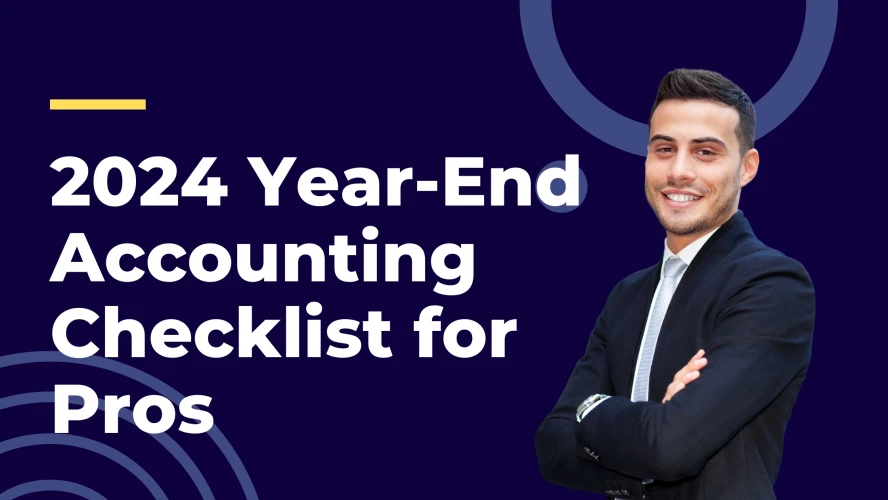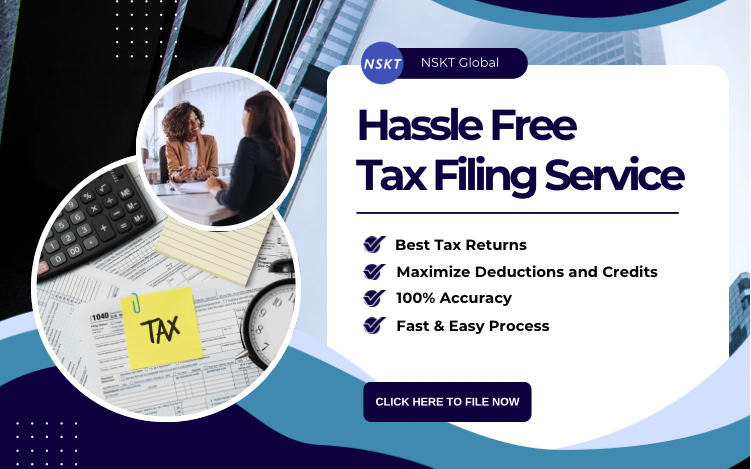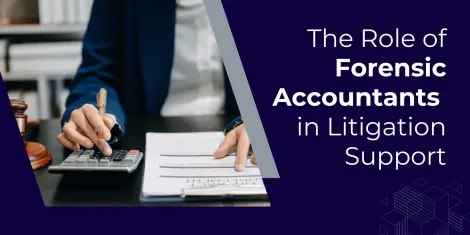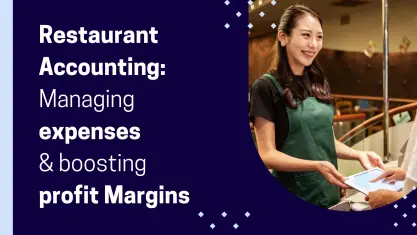Table of Contents
As the tax year draws to a close and the filing deadline approaches, American taxpayers should begin preparing their tax returns promptly and strategically. To do so accurately, taxpayers must gather all their accounts and documents containing information regarding transactions carried out throughout the year. This process helps you maximize your tax returns, reduce your tax liabilities, and avoid potential penalties for inaccurate financial reporting. Let us cover all the practices you must abide by, by listing them in the form of several checklists.
Year-end Balance Sheet Checklist
Balance your assets and liabilities
You must balance your assets and liabilities before you file your taxes. To ensure that your balance sheet checklist is in order, perform a reconciliation of all bank statements, including credit card, cash, and loan accounts, by the end of the year. You should ensure that all inflows and outflows of your bank account, as well as business expenses—including those still pending—are accurately recorded. It is also essential for your business, in case you carry out business on an accrual basis, that all accounts payable and invoices raised for customers be documented.
Capitalize fixed assets
Taxpayers need to ensure that they capitalize on all their fixed assets following the capitalization policy that applies to them. The expenses that fixed assets are capitalized properly and tax returns are maximized, account for expenses such as:
- The acquisition price
- Any commission paid for the acquisition
- Legal fees, survey costs
- Unpaid taxes for the asset and the cost of removing unwanted elements from the asset
- Cost of repairing and maintenance of the property under consideration
Enforce appropriate accounting practices
Ensuring that no transaction is documented twice in the books and accounting for all loan premiums correctly will ensure an accurate representation of a company's finances, ensuring that you clear your tax bills well within the deadline and maximize your tax returns.
Ensure that bad debts are accounted for
To ensure that taxpayers do not end up paying taxes for income that they are yet to receive or about to write off as bad debt, they must also check out the accounts receivable aging. You must report the bad debt your business has incurred, write it off, or send the debt details to a collection agency before you file your tax returns.
Balance out loans
You need to ensure that your loans are in line with your balance sheet and that you have mentioned all applicable interests and premiums as expenses while filing your tax returns.
Report all the pending payments
If you run your business mostly on cash, you must enter the checks that were written in December but are yet to be cleared before you file for tax returns. However, if your accounting is done on an accrual basis, you should account for all the payable accounts and customer invoices. This ensures that all your expenses and income in a year are accounted for.
Bank Reconciliation
Perform a thorough reconciliation of all your bank accounts, including business checking, savings, and credit card accounts. Ensure that all transactions are accounted for and discrepancies are resolved. Cross-check deposits, withdrawals, and any transfers between accounts. Reconciling your bank accounts helps prevent errors, detect unauthorized transactions, and maintain accurate records, which are essential for financial reporting and tax filing.
Opening Balances Carried Forward
Verify that the opening balances carried forward from the previous year match your current year's books. Investigate any discrepancies by reviewing prior-year closing statements and adjustments. Accurate opening balances ensure consistency across financial periods and lay the foundation for reliable financial statements. Addressing issues in opening balances early prevents errors from propagating through your accounts.
Depreciation
Review your depreciation schedules for all fixed assets to ensure compliance with tax regulations. Depreciation reflects the wear and tear of your assets over time, and accurate calculations can impact taxable income. Update records for new assets added during the year and dispose of assets no longer in use. Ensuring depreciation accuracy also helps with financial analysis and audit preparedness.
Classification of Expenses
Review and ensure all expenses are appropriately classified in your accounting records. Misclassification can lead to incorrect reporting, skewed financial ratios, and missed tax deductions. Organize expenses under suitable categories, such as cost of goods sold, administrative costs, and operational expenses. Proper classification enhances financial statement transparency and ensures compliance with accounting standards and tax regulations.
Confirm Debtor and Vendor Balances
Reach out to your debtors and vendors to confirm outstanding balances as of year-end. Compare these confirmations to your internal records and resolve any discrepancies promptly. Accurate debtor and vendor balances improve cash flow management and help in identifying potential bad debts or overpayments. Timely communication also strengthens business relationships and fosters mutual accountability.
Sales Reconciliations
Perform a detailed reconciliation of sales figures by cross-checking invoices with deposits into your bank account and sales ledgers. Identify discrepancies such as missed entries, duplicate invoices, or incorrect amounts. Reconciliation ensures that all sales are accounted for accurately, preventing revenue misstatements. This step is critical for detecting errors, analyzing sales trends, and preparing error-free financial statements.
Pass Journal Entries for Adjustment Entries
Prepare and post journal entries for any required adjustments, such as correcting errors, allocating prepayments, or recording accruals. Adjustments may also include provisions for doubtful debts, inventory write-downs, or expense allocations. Properly documented adjustment entries ensure that your financial statements reflect the true financial position and comply with accounting standards. They are essential for audit readiness and accurate reporting.
Miscellaneous
Record your outstanding Paycheck Protection Program (PPP) loan, and ensure that an accurate balance is established between your payroll liabilities, as well as December sales taxes and the payments you make in January. While calculating the tax returns you are entitled to, you must remember to account for your receivable Employee Retention Credits.
Year-end Profit & Loss Checklist for Taxpayers
Ensure appropriate accounting of revenues
Make sure that your revenue accounts are in line, and check for any negative revenues that need to be documented in the individual business expense accounts. One must also consider whether they must be accounted for as a discount or cost of goods sold. You must also account for any grant, income, or receipts related to COVID-19, as they are tax-exempt on all levels.
Compare your new statement with the old ones
You must compare the old profit and loss statements to the current one to ensure that they are accurate and the ratios are balanced. It would help if you also compared the cost of goods sold for the current year and different months within the year with older ones to ensure that they are reasonable. Calculate business expenses as a percentage of the revenue and observe if the percentages seem somewhat comparable. If they vary vastly, you must check your calculations or your cash flow for errors. A comparison of statements can help you detect anomalies, which can help you obtain the tax returns you are eligible for.
Miscellaneous
While closing your books, you must remember that a purchase expense over $2,500 counts as a fixed asset. If you buy three pieces of equipment, and none are individually worth over $2,500, they still count as expenses. It is also suggested that you skim through your uncategorized and miscellaneous incomes and expenses to code them appropriately unless they are minuscule enough to be ignored.
Review your charitable donations
You need to review your sponsorships and promotional expenses and categorize them under advertisement expenses, as they are not charitable deductions. Only when you donate to a qualifying NGO can you mention your donations as a deductible while filing your taxes. You cannot list advertisement expenses, considered business expenses, as tax-deductible!
Handle your forms correctly
Collect all the 1099 forms you have received and reconcile the amounts stated on them with your revenue accounts for accuracy. In case there are vendors that are eligible for 1099 from you, make sure that you have a 1099-S. Get your W-2s and W-3s that are to be copied and sent to your Social Security Administrator, and employees.
Related Read: What is W-2 & 1099 and how to file taxes for it?
Checklist for Year-End Data if You Use Accounting Software
Back your data up, off the grid
If you use accounting software to calculate and file your taxes, it would be wise to back up your data off the internet if you still need to back up your data throughout the year. Losing your account data can be a big issue if you have yet to file your tax returns.
Set up a closing account password
If your accounting software requires you to close your accounts manually, you must set a closing account password to ensure that your previous year's records and revenue accounts cannot be modified without authorization.
Retain your documents for the future
It is a good practice to retain a digital and a physical copy of all your documents related to income and expenses so that you can refer to them if clarification is needed. Filing amended tax returns also becomes more convenient for taxpayers if they retain digital copies of their documents.
Conclusion
Following these checklists can ensure that everything is accounted for and that you are not missing out on possible deductions or tax returns. If you fail to report an income that you have not recorded in your books either, you might have to pay penalty charges to the IRS as well. Therefore, you need to close your financial books accurately. However, you can take this burden off your shoulders by hiring professionals to handle your accounts. NSKT Global specializes in providing accounting and tax services to its clients. NSKT Global houses a skilled and experienced workforce, guaranteed to perform accurate accounting and tax filing practices for their clients. Click here, and learn how you could benefit by letting NSKT Global handle your taxes and accounting!








